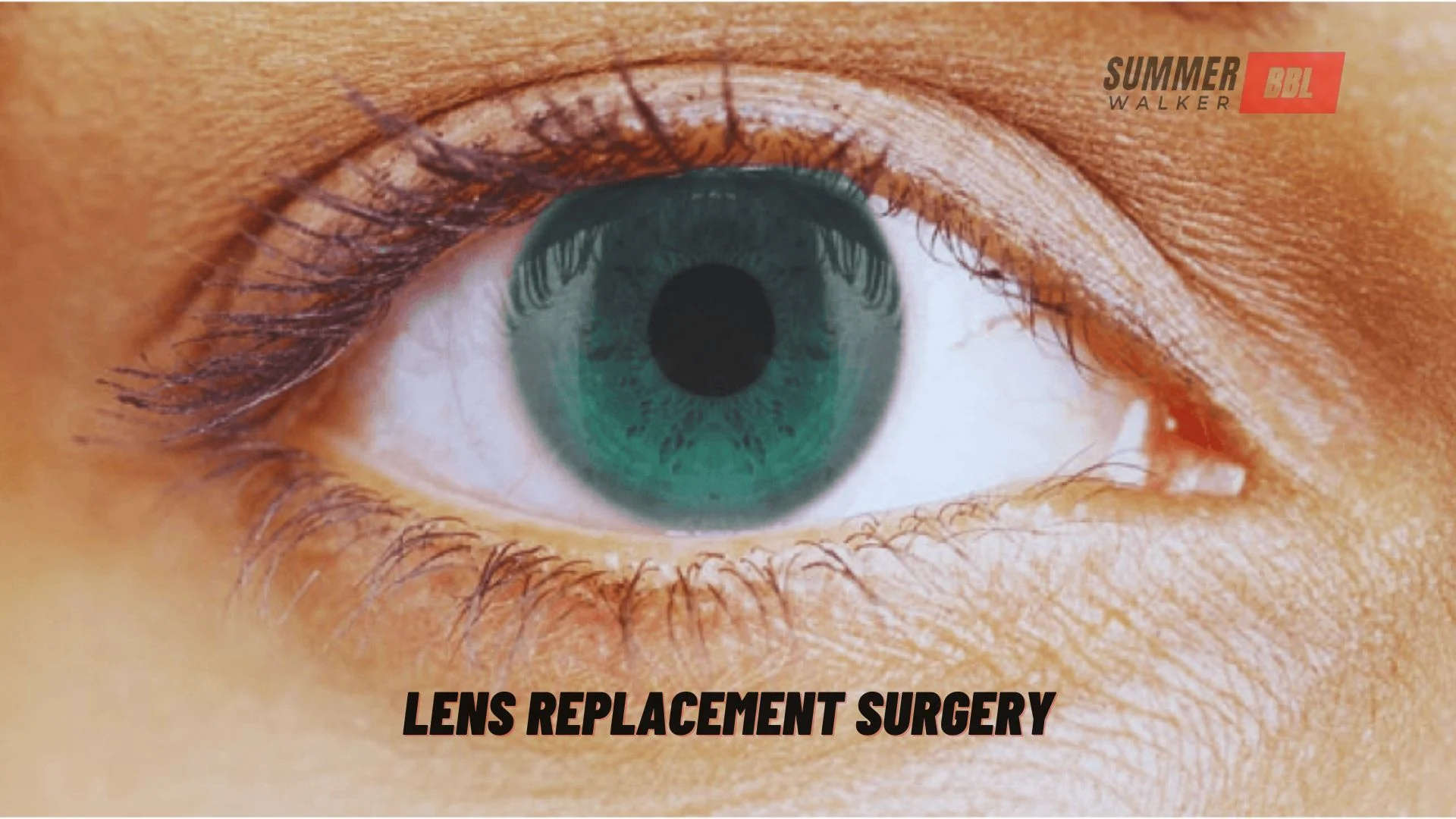Looking for freedom from glasses and contacts? Lens replacement surgery might be the key to unlocking a world of clear, uncorrected vision. Lens replacement surgery, also known as refractive lens exchange (RLE) surgery, is a safe and effective procedure that corrects vision problems by replacing your natural lens with an artificial intraocular lens (IOL).
This article dives deep into everything you need to know about lens replacement surgery, from understanding the different types and who it can benefit to the surgery itself and what to expect during recovery.
Who Can Benefit from Lens Replacement Surgery?
Lens replacement surgery is a versatile procedure that can address a variety of vision issues. Here are some of the conditions it can treat:
- Cataracts: This is a clouding of the natural lens that causes blurry vision, glare, and difficulty seeing at night. Cataracts are a common age-related condition, and lens replacement surgery is the only effective treatment.
- Nearsightedness (Myopia): Difficulty seeing distant objects clearly.
- Farsightedness (Hyperopia): Difficulty focusing on near objects.
- Astigmatism: A condition that causes blurred vision at all distances due to an irregularly shaped cornea.
- Presbyopia: Age-related near vision loss that makes it difficult to read or see close-up objects.
Types of Lens Replacement Surgery
There are two main types of lens replacement surgery, each with its benefits:
- Standard Monofocal IOL: This type of lens corrects vision for either distance or near sight. Most commonly used for cataract surgery, it provides excellent vision at one chosen focus point.
- Premium IOLs: These advanced lenses offer a wider range of vision correction. Some options include Multifocal IOLs: These lenses allow you to see clearly at multiple distances (near, far, and intermediate).
- Toric IOLs: These lenses correct astigmatism along with nearsightedness or farsightedness.
The Lens Replacement Surgery Procedure

Lens replacement surgery is typically an outpatient procedure performed under local anesthesia with sedation. Here’s a simplified breakdown of the process:
- Preparation: Your eye will be sterilized, and you’ll receive numbing eye drops.
- Creating the Incision: A tiny incision is made in the cornea, the clear dome at the front of your eye.
- Lens Removal: Your natural lens is broken up with ultrasound waves and gently removed.
- IOL Insertion: The folded artificial lens is inserted through the incision and unfolds into place.
- Closure: The incision usually self-seals without stitches.
The entire procedure typically takes 15-30 minutes per eye.
Recovery after Lens Replacement Surgery
Following lens replacement surgery, you can expect:
- Blurry vision initially: This is normal and will improve over a few days.
- Eye drops: You’ll be prescribed eye drops to prevent infection and promote healing.
- Eye protection: You’ll need to wear protective eyewear for a short period.
- Lifting restrictions: Avoid heavy lifting for a few weeks.
Most patients experience significant vision improvement within a few days and complete recovery within a few weeks.
Considering Lens Replacement Surgery?
If you’re struggling with vision problems and are interested in exploring lens replacement surgery, here are some next steps:
- Schedule a consultation: Discuss your vision concerns and candidacy for lens replacement surgery with an ophthalmologist, a doctor specializing in eye care and surgery.
- Ask questions: Don’t hesitate to ask your doctor about the different types of IOLs, the risks and benefits of the procedure, and what to expect during recovery.
- Make an informed decision: Lens replacement surgery is a life-changing procedure. Weigh the benefits and risks carefully before deciding if it’s the right choice for you.
Living a Life in Focus
Lens replacement surgery has the potential to transform your vision and improve your quality of life. By understanding your options, discussing them with your doctor, and making an informed decision, you can take a step towards a future of sharper vision and greater independence from glasses and contacts.
Conclusion
Lens replacement surgery presents a life-changing opportunity to achieve clear, uncorrected vision. Whether you’re struggling with cataracts, nearsightedness, or presbyopia, this innovative procedure can offer a permanent solution and improve your overall quality of life.
While there are potential risks and considerations to discuss with your doctor, the benefits of lens replacement surgery are undeniable. From newfound independence from glasses and contacts to the ability to effortlessly enjoy daily activities, the potential for a brighter future with clear vision is within reach.





